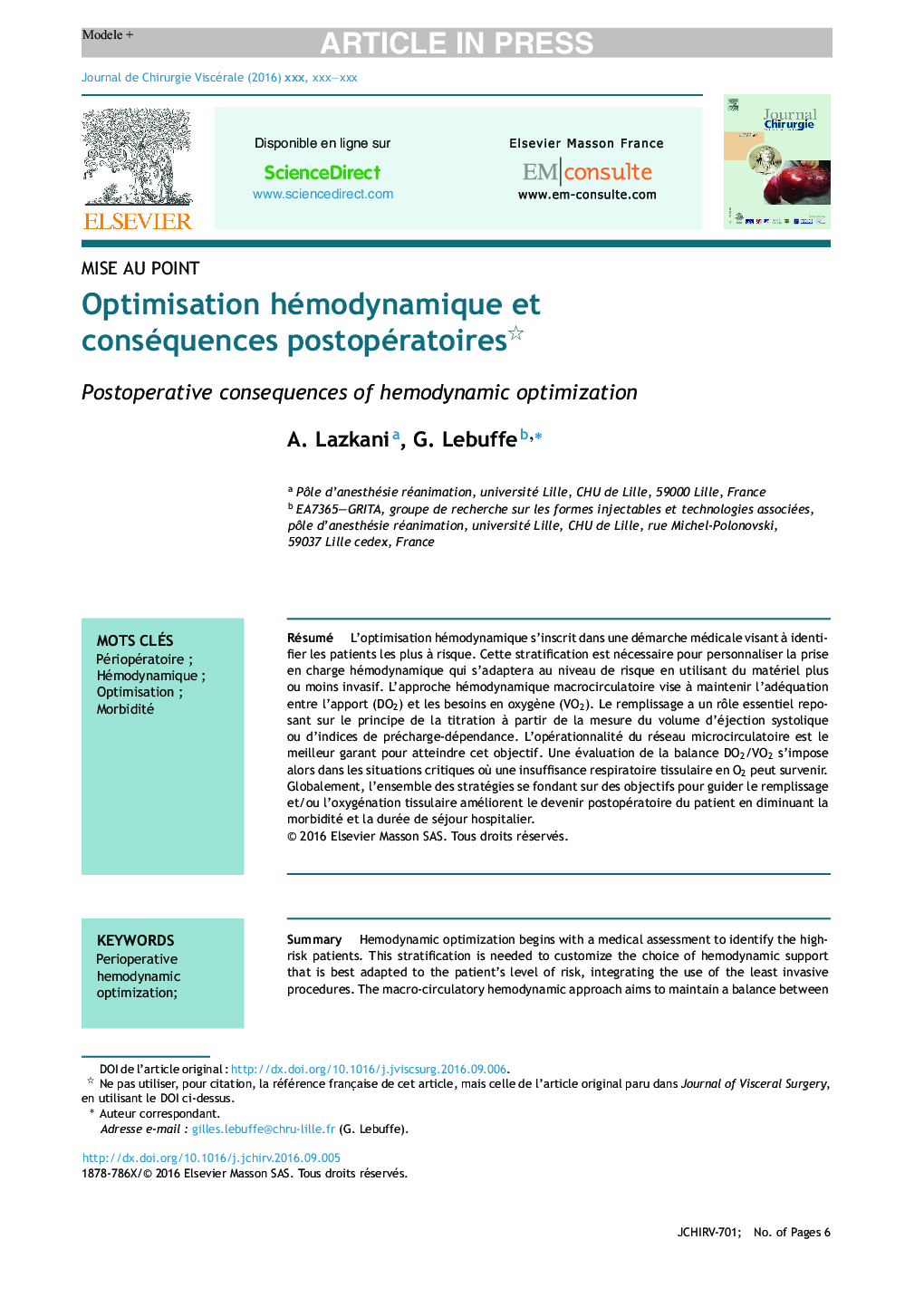| Article ID | Journal | Published Year | Pages | File Type |
|---|---|---|---|---|
| 5660252 | Journal de Chirurgie Viscérale | 2016 | 6 Pages |
Abstract
Hemodynamic optimization begins with a medical assessment to identify the high-risk patients. This stratification is needed to customize the choice of hemodynamic support that is best adapted to the patient's level of risk, integrating the use of the least invasive procedures. The macro-circulatory hemodynamic approach aims to maintain a balance between oxygen supply (DO2) and oxygen demand (VO2). Volume replacement plays a crucial role based on the titration of fluid boluses according to their effect on measured stroke volume or indices of preload dependency. Good function of the microcirculatory system is the best guarantee to achieve this goal. An assessment of the DO2/VO2Â ratio is needed for guidance in critical situations where tissue hypoxia may occur. Overall, all of these strategies are based on objective criteria to guide vascular replacement and/or tissue oxygenation in order to improve the patient's postoperative course by decreasing morbidity and hospital stay.
Related Topics
Health Sciences
Medicine and Dentistry
Gastroenterology
Authors
A. Lazkani, G. Lebuffe,
